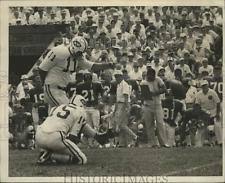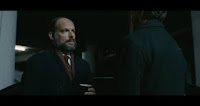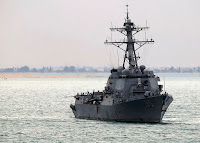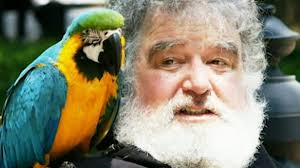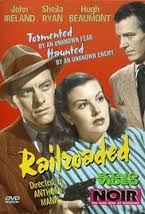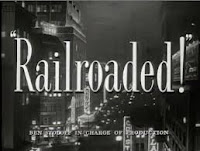
When I saw that John Heard had died, at 71, I messaged my friend Michael Goldfarb, who like me considers
Cutter's Way a magnificent meaningful movie, and Heard and Jeff Bridges tremendous in it. We didn't discuss the awful fate of being remembered primarily as the hapless and largely off-screen father in the
Home Alone movies. Michael then on social media recapitulated a discussion we'd had many times, about Heard's huge talent, how he was regarded as maybe the best of his generation of actors, by friends of Michael's when he was trying to make it s an actor in New York, and how a propensity for wild living may have impeded his progress to stardom. Of course anyone who marries Margot Kidder for six days (officially, apparently, it took more than a year to dissolve the union) may be confirmed into some sort of pantheon of wild.

One part of my half of the discussion was about meeting Heard, as I did one night at the Flask pub in Highgate. I can't remember when that was; I want to say in the early 80s, but I doubt Heard would have remembered the meeting ten minutes after he left. He was spectacularly hammered, dressed as if he had been spending his nights sleeping rough on the Heath, and if you thought he might have been in character as Alex Cutter you would not have been that far off.
But the rest of my part of the discussion involved Heard's actual star potential, because
Cutter's Way is sort of fulcrum on which the rest of his career balances, though balances with most of it on the distaff side.

Heard's first big part was in Joan Micklin Silver's
Between The Lines (1979), based on the story of the Boston Phoenix. This is one of those Sixties generation films (like
Return Of The Secaucus Seven) that got subsumed by
The Big Chill, just as William Hurt seemed to subsume John Heard (not to mention John Hurt). Heard's is the linchpin role, while Jeff Goldblum, Bruno Kirby and Michael J Pollard steal scenes; he battles with Lindsey Crouse in the ones they share; Jill Eichenberry's more interesting take as the idealistic 'secretary' didn't seem to get her anywhere. Heard went on to take the lead opposite Mary Beth Hurt in Silver's
Chilly Scenes Of Winter (1979), which was originally titled
Head Over Heels before someone realised it wasn't a sweet romantic comedy and reverted to the original title of Ann Beattie's novel. Heard could be a romantic lead in a small indy film, but where he went from there was the question.

That same year he had a big part in another off-beat romantic part, as Reverend Dimmesdale in a TV mini-series version
The Scarlet Letter, which was most notable for improving on Hawthorne by making Meg Foster's letter A gold rather than scarlet. Oddly enough, Dimmesdale, a role requiring wide range and considerable restraint, would come to define Heard's future.
His next three films are his best. In
Heart Beat (1980) he plays Jack Kerouac to Nick Nolte's Neal Cassady and Sissy Spacek's Carolyn Cassady.

John Bynum's film seems forgotten now, but it was very sharp in its tone, and Heard, who wouldn't spring to mind as a Kerouac, catches the writer's vulnerability, while inevitably having to play second-fiddle to Nolte.
Which didn't happen in
Cutter's Way (1981), at least on screen. Originally called
Cutter And Bone, after Newton Thornburg's powerfully gritty novel, this one was retitled after it's initial release, sort of
Head Over Heels in reverse. You could make a strong case that this is the last great movie of the Seventies, something that could be shown in double-features with
Who'll Stop The Rain (
Dog Soldiers) in repertory theatres forever, were there still rep cinemas. Heard's performance is spectacular without being overly showy, but it was Jeff Bridges, more straightforward on the surface as Bone, who was the star. Of course, he'd be seen as a lead ever since
The Last Picture Show, and had ten or more starring roles, in some great films, since then. In fact, think of Timothy Bottoms in that film, or Barry Brown in
Bad Company, and compare their careers after Bridges to Heard's.
But who else could you compare Heard's Cutter to? Hoffman's Ratso Rizzo? Far more depth and menace. Pacino's Serpico? If Pacino hadn't already done
The Godfather? Here's where some space exists, because even as Cutter, Heard seems too knowing, not giving up to the intensity. Perhaps he was just a little too cerebral for the Pacino leads, a little less glamorous for the Hurt or Bridges parts. Perhaps Richard Dreyfuss, about whom the gossip, along with Heard, in the famous Raul Julia Othello in the Park was severe. Dreyfuss too bordered on stardom, but lacked leading man looks, for which he compensated by over-the-top emoting. It's a dangerous quicksand of a discussion in which to become mired.
In
Cat People (1982) Heard was a torn-romantic lead, in the Kent Smith role (with Annette O'Toole excellent in the Jane Randolph part) subsumed by Natassja Kinski and the black cat she played. With Malcolm MacDowell hamming it through every scene he's in,

Heard seems to fade, even though his downplaying of the bittersweet ending ought to have scored him more notice. He was Clifford Odets in a 1983 TV movie version of
Will There Really Be A Morning, where he captured Odets' callous cruelty to Frances Farmer. Farmer, however, was played by Susan Blakely, and Heard's (and Lee Grant's, as her mother) performances were for naught. He played Geraldine Page's son in
A Trip To Bountiful (1985), for which she won an Oscar, and defined his future roles with a great take as Tom Hanks' foil in
Big (1988).

Looking at IMDB I realised he worked consistently for the next three decades. If high living had hurt his skills, or cost him stardom, it didn't affect his ability to get cast in roles that more often than not had him playing someone with something evil or bad or treacherous lurking under the surface, something which that innate intelligence usually signalled. He was excellent, however, when he was able to simply indulge playing a fallen hero, as in
The Sopranos, where his corrupt detective Vin Makazian got him nominated for an Emmy. His part in
Sharknado, on the other hand, didn't.

From potential star of a generation to jobbing actor. In one sense, Heard never fit the description of a Hollywood leading man. What he fit was a perception of the era in which he came of age, and his ability to live up to our sense, as those who came up with him, of what those times meant. If the dreams of the time have crashed, if potential seems wasted, there is still the accumulation of work, and those high points that seem largely weighted in the first few years. Perhaps he still represents a generation in that sense, a generation now looking back on their work. RIP John Heard.
 My obituary of June Foray, the voice-over artist who was most famously the voice of Rocky the Flying Squirrel and Natasha Fatale, is on line at the Guardian now; you can link to it here. It should be in the paper paper tomorrow.
My obituary of June Foray, the voice-over artist who was most famously the voice of Rocky the Flying Squirrel and Natasha Fatale, is on line at the Guardian now; you can link to it here. It should be in the paper paper tomorrow. It was tempting to throw in lots of the great stuff from Rocky & Bullwinkle, George of The Jungle, and Dudley Do-Right, or to trace the series' roots back to Jay Ward and Alex Anderson's Crusader Rabbit, where Crusader and Ragland T Tiger were prototypes for Rocky and Bullwinkle (and Dudley Nightshade for Snidley Whiplash). I hadn't been aware of Mel Blanc's exclusivity on voice credits on the Warners' cartoons; it was a shame. That's Chuck Jones (left) and Blanc with June.
It was tempting to throw in lots of the great stuff from Rocky & Bullwinkle, George of The Jungle, and Dudley Do-Right, or to trace the series' roots back to Jay Ward and Alex Anderson's Crusader Rabbit, where Crusader and Ragland T Tiger were prototypes for Rocky and Bullwinkle (and Dudley Nightshade for Snidley Whiplash). I hadn't been aware of Mel Blanc's exclusivity on voice credits on the Warners' cartoons; it was a shame. That's Chuck Jones (left) and Blanc with June.  There were some connections I didn't include, like Bill Scott, the voice of Bullwinkle, who worked with Foray on Speaking Of Animals. Or the stuff she did with Stan Freberg, a comic genius of radio, advertising and records. That's her on the right, in between Daws Butler and Freberg. When she performed on Carson's Cellar she was doing skits and sketches, playing the Imogene Coca role from Sid Caesar's show, and she was funny. It was before my time, but you can find a bit of it on the You Tube.
There were some connections I didn't include, like Bill Scott, the voice of Bullwinkle, who worked with Foray on Speaking Of Animals. Or the stuff she did with Stan Freberg, a comic genius of radio, advertising and records. That's her on the right, in between Daws Butler and Freberg. When she performed on Carson's Cellar she was doing skits and sketches, playing the Imogene Coca role from Sid Caesar's show, and she was funny. It was before my time, but you can find a bit of it on the You Tube.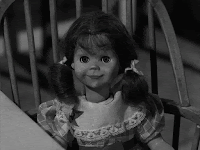 I remember the Talky Tina episode of Twilight Zone (but didn't recall Telly Salvalas!). I don't remember the High Priestess Sabaka, and I watched Andy's Gang as a kid, and loved Gunga ('such is so, sahib') and Rama ('ayee Gunga!').
I remember the Talky Tina episode of Twilight Zone (but didn't recall Telly Salvalas!). I don't remember the High Priestess Sabaka, and I watched Andy's Gang as a kid, and loved Gunga ('such is so, sahib') and Rama ('ayee Gunga!'). I will have to search out that movie. It even has Boris Karloff! And the one role I wish I had mentioned was voicing Wheezy, the zoot-suit hyena in Roger Rabbit.
I will have to search out that movie. It even has Boris Karloff! And the one role I wish I had mentioned was voicing Wheezy, the zoot-suit hyena in Roger Rabbit. 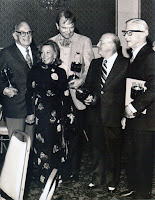 and that was something she should be admired for doing. That's her posed with (left to right) Tex Avery, Chuck Jones, Fritz Freleng and Bob Babbitt. While I was researching the obit, I read a couple of pieces about her by Mark Evanier, whom I remembered as a comic fan and then writer, and who co-wrote her biography. I got the image of a tiny dynamo always in motion or on voice. It was that image I held with me as I wrote the obit. RIP.
and that was something she should be admired for doing. That's her posed with (left to right) Tex Avery, Chuck Jones, Fritz Freleng and Bob Babbitt. While I was researching the obit, I read a couple of pieces about her by Mark Evanier, whom I remembered as a comic fan and then writer, and who co-wrote her biography. I got the image of a tiny dynamo always in motion or on voice. It was that image I held with me as I wrote the obit. RIP.





